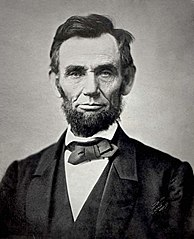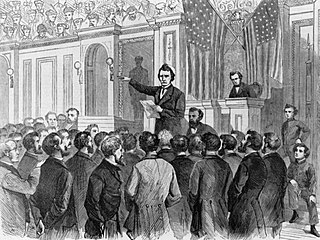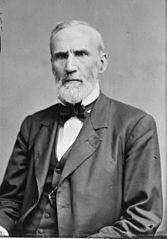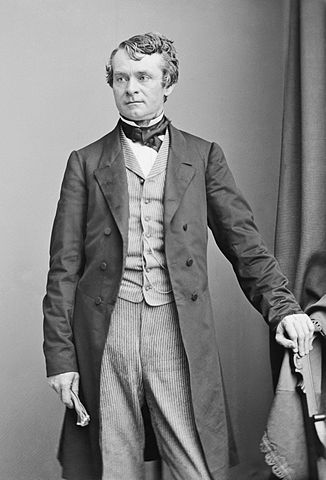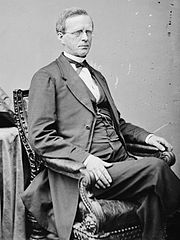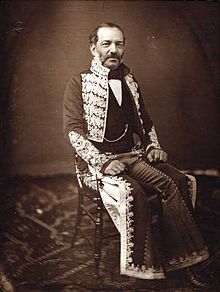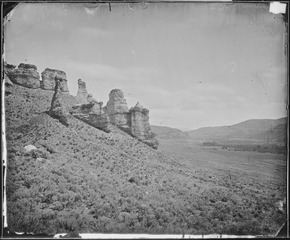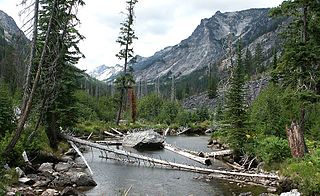Story of a Party - Chapter XXIII
From Valley to Valley
"True independence and freedom can only exist in doing what's right."
- Brigham Young
***
From "The Birth of States" by Millard Donelson
Fremont Press, Albany, New York, 1939
"The state of Colorado is the first and, to date, only [1] state to have seceded from an existing state, in this case California, without that state having seceded first. The state of California, formed as part of the "Great Compromise" of 1850, was made a single state largely in order to placate the northerners who feared the extension of slavery to the part of the territory south of the Missouri Compromise line [2]; this fear was largely ungrounded, as the land there was completely unsuitable to plantation agriculture. The state remained divided in all but name; as such, the proposals to split the state were numerous throughout the 1850s.
In 1854, the State Assembly of California passed a bill to divide the state in three. The first state created would be an extended Colorado including Monterrey, Merced and Mariposa Counties and everything south of them. The second would be Shasta, consisting of the far north - this area, while quite populous at the time thanks to the Gold Rush of '49, was depopulated, and today has barely 300,000 inhabitants - and the third was the rump California in the middle. This bill failed to gain traction in the Senate, and was consequently abandoned; however, separatism remains in the far north of the state [3].
Andrés Pico, State Assemblyman from Los Angeles County.
It was five years later, however, that the movement gained traction. Andrés Pico, a rancher in the San Fernando Valley who had fought for the Mexicans against the US, was elected to the State Assembly in 1851, and campaigned for the division bill of 1854; although that bill failed, he continued to campaign for Coloradan separation. In 1859, he wrote a bill to split off the parts of the state south of the 6th Standard Parallel [4] as the Colorado Territory, since the area was not technically populous enough to be a state at the time [5]. This gained traction, and on April 18, Governor Stanford [6] signed the bill, it having passed both houses of the legislature. However, state secessions needed the support of Congress even before the Fifteenth Amendment [7], and thanks to the secession crisis, the bill proposed to Congress was ignored until September of the year after, when it was brought forth by Senator David C. Broderick [8]. It passed the House two weeks after, and the Senate by mid-October. Fremont signed it into law, formally creating the Territory of Colorado with Los Angeles as its capital, and Stephen C. Foster, long-time mayor of Los Angeles, was appointed as the first governor."
***
From "The Mountain Beehive: A History of the Second Mormon Exodus" by Noah Templeton
Borah Press, Lewiston, Spokane, 1998
"Since the creation of the Utah Territory in 1850, tensions had been on the rise between the LDS settlers of the area and the federal government; the election of church officials to most positions of power within the territory, despite the democratic nature of the elections, did much to convince Washington that Utah was turning into a theocracy; the appointment of Church President Brigham Young as the first territorial governor, although made by President Fillmore in Washington and ratified by the Senate, did little to alleviate these fears. It was believed that the tremendous influence the Church had on the everyday lives of its members was incompatible with the secular republican tradition of the United States, and although many in the LDS were unabashedly patriotic and supportive of their nation, they were not generally fond of the people who ran the federal government - President Young himself summed up the sentiments well when he quipped: "I love the government and the Constitution of the United States, but I do not love the damned rascals that administer the government."
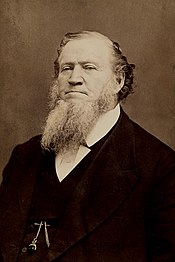
Brigham Young, President of the Church and, until 1857, Governor of Utah.
Beginning in 1851, and greatly adding to the concerns of Washington, several federal officials, some fearing for their lives, left their positions within the Utah government and returned to the East. The stories of these "Runaway Officials" were recounted in the press and in Washington society, and led many in government to suspect that the Mormons were mounting open rebellion against federal authority. The stories, to quote a letter sent in 1858 by then-Congressman Banks to a friend in Boston, "left unclear whether they habitually kicked their dogs; otherwise their calendar of infamy in Utah was complete." [9]
With Fremont in office, tensions came to a head. Among the points of the Republican platform for 1856 had been a promise to move against the institution of plural marriage among the LDS settlers [10]; when Fremont was finally elected, most Saints, including President Young, saw measures against them coming. Indeed, their fears would he answered in the spring of 1857, when Fremont removed Young from the governorship and replaced him with Stephen Selwyn Harding [11]; Young was not notified of his removal from office, but the news soon reached Salt Lake City, whereupon Young, still acting as governor, declared martial law throughout the territory. Daniel H. Wells, Second Counselor of the First Presidency of the Church, organised the Nauvoo Legion as a kind of settlers' militia, and where they were unavailable, weapons were crafted from farming equipment; scythes were turned into bayonets, and were sharpened into spears. The Utahns made it clear from the start that they would resist the presence of federal troops tooth-and-nail.
In September, the Legion, camped out in Echo Canyon, met federal troops for the first time. A scouting party, surveying the route ahead, was attacked and captured by Legion forces on September 18; three days later, an army supply caravan was captured and burned by Legion militiamen. Due to this, along with some propagandic statements presumably emanating from Young and the LDS Church directly, Colonel Alexander, the temporary army commander, decided not to take the Echo Canyon route, which was by far the closest one, into Utah, instead resolving to move north and descend on Utah along the Bear River, outflanking the Legion; however, as luck would have it, a heavy blizzard in early October derailed his plans. The standoff between the two forces thus created lasted until year's end, with William S. Harney [12] arriving to take personal command of the expedition in mid-November.
Echo Canyon in 1869.
In the winter, Young developed what he called the Sevastopol Plan, a resolution to evacuate the territory rather than face the Army openly, just like in Nauvoo twelve years before. For their new home, Young suggested Bitterroot Valley, in what was then Washington Territory. The land, or so Young believed, was good enough for the frugal Saints to make a living, but not good enough for anyone else to want it [13]. As the winter raged on, the move was continually stalled, and negotiations even took place between the Church and the Army, with Thomas L. Kane as mediator. Young proved willing to step down in Harding's favour, but would not let the Army into Utah, and as several other discontentments sprang up, the negotiations were stalled [14].
As March gave way to April, long wagon trains made their way through the Bear River valley, carrying thousands upon thousands of Saints, with their families, livestock, and farming equipment. The Salt Lake Temple had been torn down along with much of the city around it, and many people actually brought with them their homes in pieces [15]. However, President Young had not been entirely successful in enforcing Sevastopol, and a large faction of the Church, led by Wells, remained in Utah, swearing to defend "the Place" until their last breath. Additional, much smaller groups, most of them loyal to Young and the Church leadership, established themselves around Las Vegas, New Mexico (as it then was) and San Bernardino, Colorado [16]. Thus began a great schism within the LDS Church, one that would last unabated until the 1960s.
This effort proved a dismal failure, and in May, as the first Mormon settlers poured across the Bitterroots, the Army pushed through the fortifications at Echo Canyon, arriving in Salt Lake City on May 21. Harding took the oath of office three days later, and as martial law was already in effect, the Army proceeded to occupy the territory. Wells, and other Mormon leaders who had stayed behind in Utah, decried the troop presence, stating that "these heinous practices are a threat to Utah's people, and an egregious stain on American democracy that will surely take a long time to wipe off".
Blodgett Canyon, Spokane, is adjacent to the larger Bitterroot Valley.
Young's faction, as mentioned, arrived in the Bitterroot Valley in May, and founded the cities of New Zion [17] and Fillmore [18]. The new temple was built in New Zion between 1860 and 1889, rivalling the original designs for the Salt Lake Temple in size and grandeur. The Salt Lake Temple itself was dug out by Wells' men, and construction resumed, finishing in 1884. This temple wasn't nearly as large as the original plans, and until the mending of the Church schism called for the expansion of the Temple, it was generally viewed as too plain and small to serve the city adequately, and many calls were made for its renovation, all falling on deaf ears due to lack of funds.
With the crisis seemingly over, Fremont recalled the troops in mid-August [19], and upon getting word, Governor Harding rescinded Young's martial law declaration. The territorial elections were held on schedule in November, and with much of the Mormon populace having left (although Church members were still a sizeable majority of the population), the results were a narrow victory for the Liberals [20]; however, the People's Party retained much clout in the Territory, and as such, although the troops were gone from the streets of Salt Lake City, tensions continued to simmer."
***
[1] This is not to say that there won't be more before TTL's present day.
[2] ITTL, what with the state splitting so quickly, this view becomes common among historians, and indeed, it predominates both academic and popular history by the present day (ITTL, 'California' = the Central Valley and the Bay Area, and Colorado is seen as culturally separate, so it does make sense).
[3] The bill is OTL, and so is the rest of the paragraph; IOTL, the separatists advocate creating a new State of Jefferson along with south-western Oregon.
[4] The Sixth Standard Parallel, used as the surveying baseline in California, is defined by Mount Diablo, and runs about 13.8 miles south of the 36th parallel north.
[5] The area had something like 30,000 people in it in 1860, and nearly half of them were in Los Angeles County, and about a third in San Diego.
[6] IOTL, Leland Stanford lost the gubernatorial election of 1859 to John B. Weller, a Lecompton Democrat. ITTL, with the Republicans doing better generally in the state, Stanford wins the election.
[7] The Fifteenth Amendment, also known as the 'Perfect Union' amendment, made it significantly harder for states to secede. For more information, see Chapter XII.
[8] This is the first divergence (apart from Stanford being governor two years earlier); IOTL, the bill was never even discussed in Congress due to the secession crisis being later. As for Broderick, IOTL he got killed in a duel with David Terry, the former state chief justice, in 1859; ITTL, it's Terry who's killed, further damaging the Lecompton Democrat cause in California.
[9] This quote, which comes from Norman Furniss' book "The Mormon Conflict: 1850-1859", felt too good to be left out of TTL's history.
[10] This is OTL; the passage from the party program read "Resolved that the Constitution confers upon Congress sovereign powers over the territories of the United States for their government; and that in the exercise of this power, it is both the right and the imperative duty of Congress to prohibit in the Territories those twin relics of barbarism — polygamy, and slavery." Actually, both major parties made this a point of their campaign (although the Republicans felt more strongly about it), which made the position of the LDS Church slightly awkward.
[11] IOTL, Harding was a Hoosier abolitionist who was appointed by Lincoln after John Dawson's record-setting three weeks of not pissing off the Mormons enough to be removed from office. His term, in turn, lasted barely two years before he too pissed off the Mormons (by criticising plural marriage) and was replaced by President Lincoln after the Mormon settlers signed a petition to that effect.
[12] Harney was a career cavalry officer, who served with distinction in the Mexican War and, IOTL, was in charge of the Department of the West when the Civil War broke out. He was instrumental in foiling Governor Claiborne Jackson's attempts to secede, and secured Missouri for the Union.
[13] This plan existed IOTL; however, Indian raids against a fort on their route blocked the way of the escape, and the Mormons moved south instead. They were originally supposed to head to somewhere on the Utah-New Mexico border (as it stood), but ended up moving only a bit south of the Salt Lake Valley, founding cities like Provo and Fillmore in the new area.
[14] IOTL, Kane succeeded in letting the new governor in, but the Mexican Standoff in Echo Canyon between the Army and the Legion went on. ITTL, he doesn't even get that far.
[15] IOTL, the Mormons began moving south in much the same way, but when Buchanan agreed to pull out (pressured as he was by much of Congress), Young aborted the move, and only some of the Mormons spread south from the Place.
[16] These cities were settled by Mormons IOTL, but when the Utah War came, they were recalled by Young to Utah. ITTL, the order gets lost along the way, and the LDS communities stay where they are. Thus, for instance, the Old Mormon Fort in Las Vegas continues to be used, the area around it eventually becoming an important waystation and base of operations for couriers and other travellers of the desert wastes.
[17] OTL Lolo, Montana. The name symbolises the new Zion (a name Joseph Smith used for the destined Mormon homeland in the West) Young's followers found in the Bitterroot Valley.
[18] OTL Hamilton, Montana. The city is named for President Fillmore, who gave the Mormons power in Utah by organising the territorial government and appointing Young as governor.
[19] IOTL, Buchanan had to back down in April, after being scolded by Congress for escalating the crisis; this allowed the Mormons to move back to Salt Lake City. Fremont is less lenient in light of the Republican platform, and so the Utah War lasts considerably longer.
[20] The Republican and Democratic parties didn't set up shop in Utah until statehood. Before that, there was a distinct two-party system in place: there was the People's Party, whose candidates were generally Mormons with Church support, and who were usually the majority party, especially in the legislature. Then there was the Liberal Party, composed of Gentiles and secular-minded Mormons, who were against Church power, and polled well in Gentile-dominated areas. The governor, who was appointed by Washington, tended to be either neutral or a moderate Liberal.


